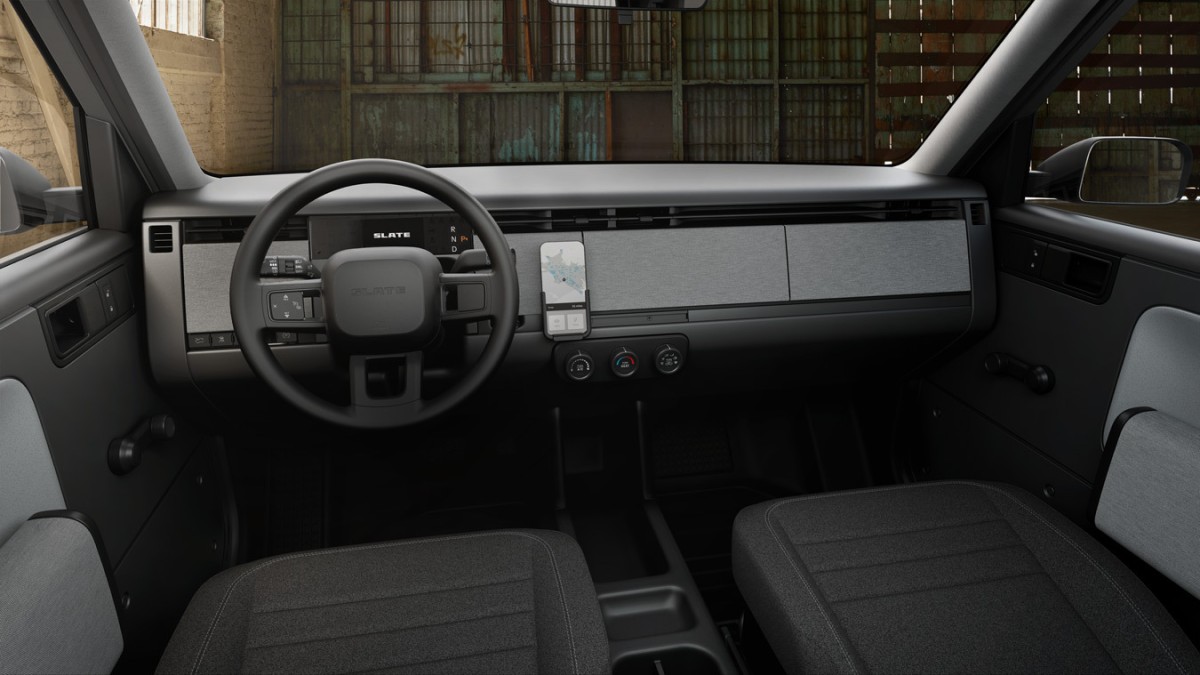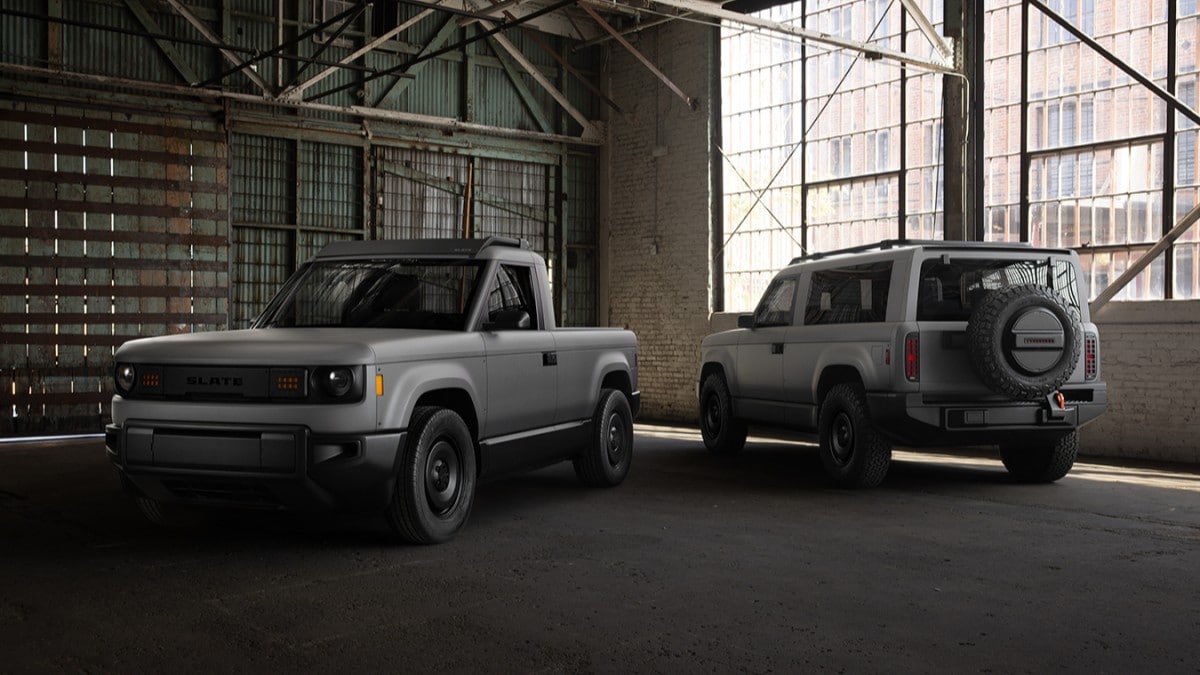Meet the Amazon Basics pickup.
Slate Auto, a new Michigan-based startup partly funded by Amazon founder Jeff Bezos, today launched a compact electric truck with a target price under $20,000 (after federal EV incentives).
Slate’s first product, the creatively named Slate Truck, is as bare bones as transportation gets in 2025. It even features hand-cranked windows (something absent from the automotive world since Jeep removed them from the base Wrangler this year).
Yet it’s set to enter the most underserved part of the automotive market, it will be made in America, and you can reserve one today for less than the cost of takeout for a small family. A place in line costs just $50.
The company hasn’t revealed when production could start.


The Problem: No Cheap Trucks
There’s a hole in the automotive market, a huge segment of drivers it no longer serves.
New cars get more complicated and more expensive every year. Established automakers have all adopted the same strategy, cutting inexpensive cars from their lineups and introducing more expensive models for wealthier customers. A bevy of new electric vehicle (EV) startups is following another pattern that doesn’t help, building expensive cars first and hoping to make more affordable models later.
That leaves shoppers seeking an inexpensive car almost helpless. For under $25,000, shoppers can head to the used car lot or make do with one of a handful of subcompact cars and SUVs like the Nissan Versa, Kia Soul, or Chevrolet Trax.
If you need space to haul something, you’re entirely out of luck. America’s least expensive new truck, the Ford Maverick, starts at $28,590 but is hard to find at that price. The average Maverick sold for $32,862 last month.


The Solution: A Baby Electric With a DIY Soul
“The definition of what’s affordable is broken,” says Slate CEO Chris Barman. “Slate exists to put the power back in the hands of customers who have been ignored by the auto industry. Slate is a radical truck platform so customizable that it can transform from a 2-seat pickup to a 5-seat SUV.”
Electric vehicle (EV) technology theoretically gives automakers the chance to build cheaper cars. EVs ride on “skateboard platforms,” which pack all the mechanical parts of a vehicle into a nearly flat unit that fits between the wheels and under the floor. Automakers can build new designs on a skateboard platform just by changing the body.
Slate has designed a radically simple one that doesn’t try to be everything to everyone. It’s compact, with a 52.7 kWh battery pack (tiny by current standards) and a targeted range of just 150 miles. Slate says it can recharge overnight plugged into an ordinary household outlet, and carry a payload of 1,400 pounds (remember, driver and passengers count as payload).
Plugged into a DC fast charger, it can charge to 80% of its capacity in “under 30 minutes,” Slate says.
An available accessory battery pack pushes range to 240 miles.
A single electric motor drives the rear wheels and makes 201 horsepower. Slate says it can go from 0-60 mph in 8 seconds.
That’s respectable, but it won’t win any races. This is the perfect truck for running errands around town, loading with gardening supplies, or transporting a couple of mountain bikes to the trailhead.


How Simple? Think “Flat Pack SUV”
The Slate Truck comes in a single configuration — as a single-cab, short-bed truck meant for two.
But you can turn it into an SUV yourself, if a truck doesn’t quite meet your needs. “The flat-pack accessory SUV Kit turns the truck into a 5-seat SUV, with a roll cage, airbags, [and] rear seat,” the company says. It’s simple enough to do yourself, though Slate will build it for you if you prefer.
The flat pack aesthetic continues into the truck’s cabin, where flat surfaces and easy-clean synthetic textiles dominate. Screens? There’s a phone holder if you want to bring your own.
It has a full suite of modern safety tech, including automatic emergency braking, forward collision warning, and “up to” 8 airbags.
Direct-to-Consumer Sales
Like many EV startups, Slate will sell directly to buyers without a dealership network acting as a go-between. Slate press materials say owners can “find service locations in your neighborhood,” but don’t explain how maintenance and repair will work.
It’s Early, but This Could Work
The Slate Truck created a bit of excitement among the Kelley Blue Book editorial team.
Automotive journalists are hard to impress with an expensive car — we’ve seen them all and, after all, how hard is it to build a great car for a six-figure price? Cynical after too many Mercedes events, automotive writers often get more excited about hand-crank windows and reasonable price tags. This is telegraphed to our interests.
Slate is trying something genuinely new and targeting a real hole in the market. It might find purchase with small businesses making deliveries (not for nothing does the company brag about how easy it is to get a vinyl wrap on the Slate). It might be a great workhorse second car for those with a hobby to feed. The Slate Truck might even work well for young people or empty nesters who have more use for a small truck bed than a rear seat.
A bit of skepticism is in order. Launching a new automaker is brutally hard because it requires immense outlays of cash before you ever make your first dime. Ask Lordstown Motors how hard it is to start an electric truck company.
But Slate has the backing of one of the wealthiest people alive, a team full of logistics experts with Amazon experience, and a group of engineers drawn from all over the automotive industry.
They have a shot.

